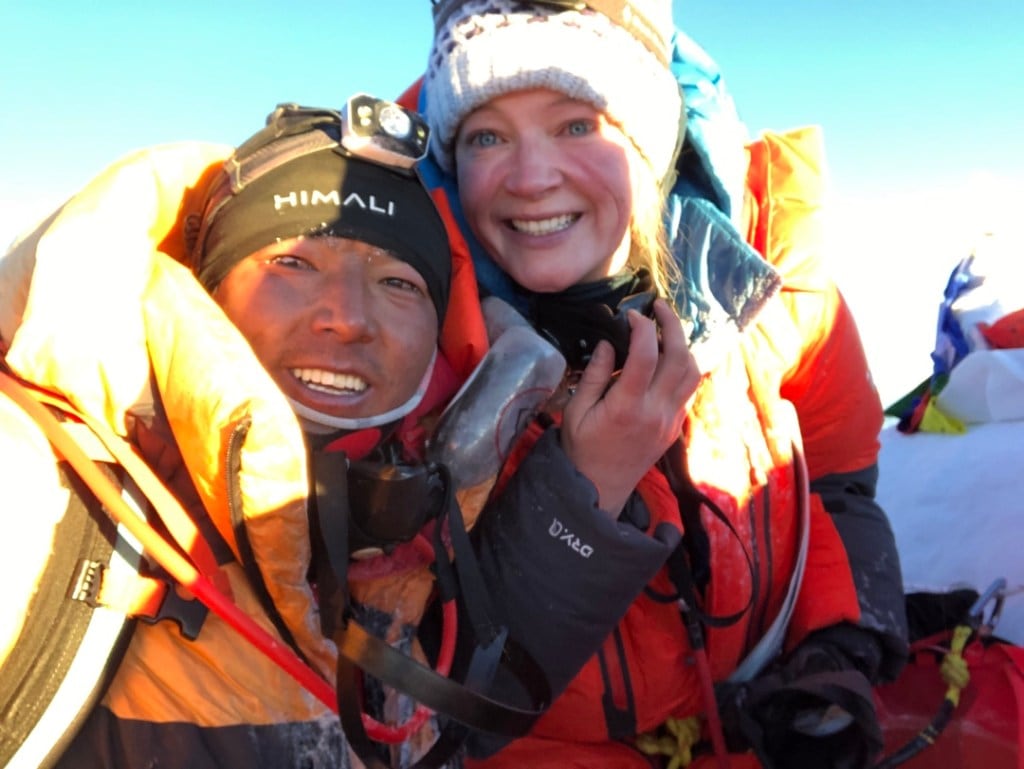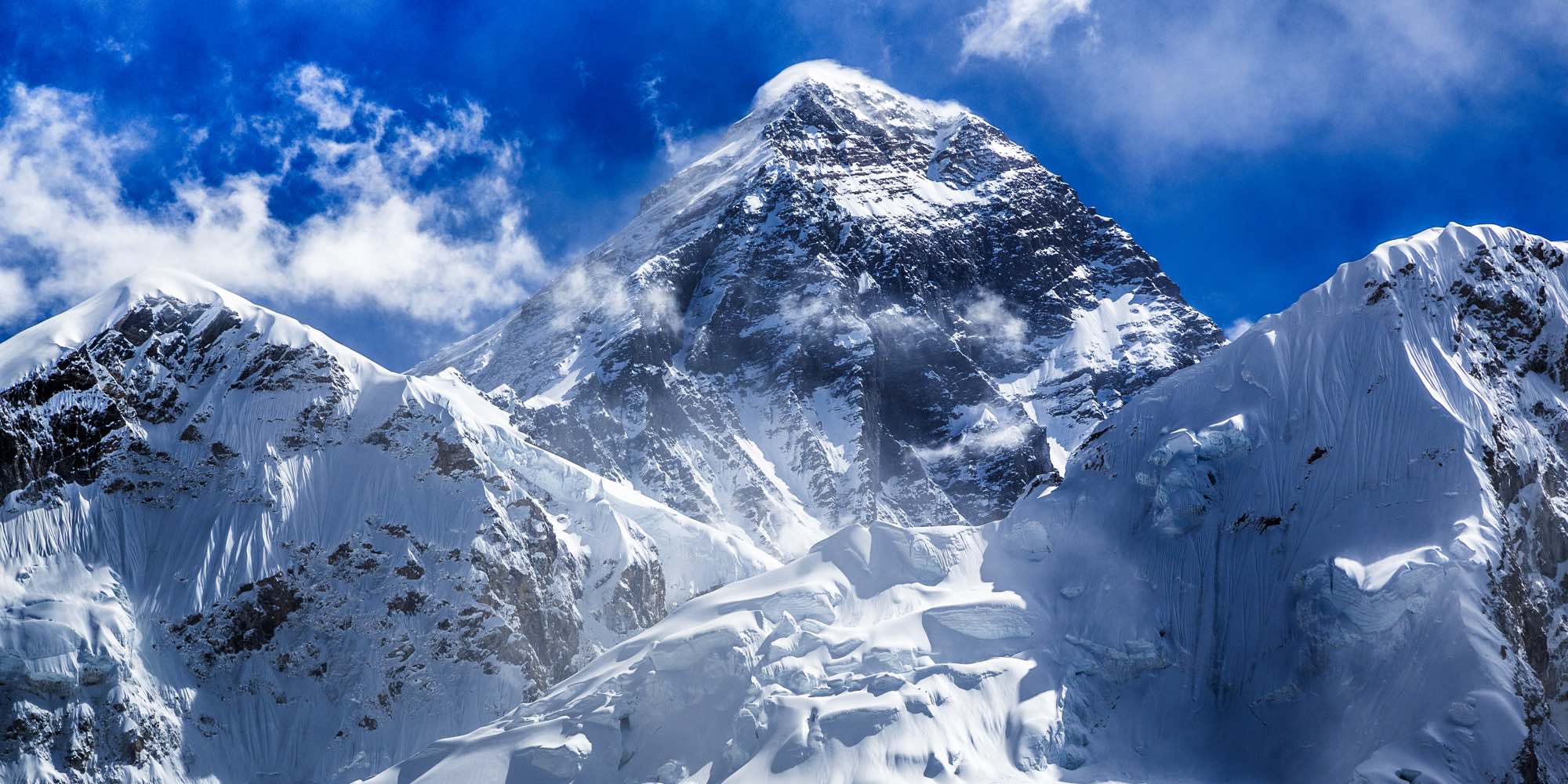When reflecting on this year’s Everest season, Himalayan expert Alan Arnette described it as “the best of times and the worst of times.” During the peak’s two-month climbing window—April and May annually—an estimated 900 people stood on the summit of the world’s tallest mountain, an all-time high. Eleven people also died—making it one of the deadliest Everest climbing seasons on record.
I was one of those who summited. On May 22, I climbed from Camp 4 at the South Col to the top of the world with International Mountain Guides. I’ve guided around the world for IMG for a decade, but this time I wasn’t working—just climbing. I descended safely down the Lhotse Face and through the Khumbu Icefall, then caught a helicopter to Kathmandu and a flight home to Seattle. I’ve been home for a few weeks, but I’m barely beginning to process the experience.
Through my jet-lagged haze, I saw the media coverage of the season and the conversations it sparked. During the last weeks of May and beginning of June, The New York Times published headlines like These Are The Victims of a Deadly Climbing Season on Mount Everest and Nepal Seeks Help Identifying Bodies on Mount Everest. A friend sent me a link to a piece in The Atlantic titled Everest is Over. An Instagram image of a line of people on the summit ridge went viral. My climbing teammates, some of whom had been home for less than 48 hours, were called, emailed and sent personal messages online by producers, editors and journalists from around the world who opened with questions like, “What’s it like to step over a dead body?” and “Could you see their faces? Were they in pain?” My teammate told me he just shook his head. “I just hung up the phone,” he said. “This was a multi-dimensional experience.”
Arnette said a variety of factors created a perfect storm this season. “There were too few windows of good weather, too many guide services who were willing to take anybody regardless of experience, and too many people who didn’t know that they needed that much experience to climb the tallest mountain in the world. Individually those factors could be dealt with, but together they broke the model that’s been working on this mountain.”
To help understand how those factors contributed to one of the deadliest years on record, it’s easiest to look at them separately.
A short weather window
Mid- to late May is historically the ideal time to summit Everest because the jet stream that sits over the mountain—which can blast winds up to 100 miles per hour at the peak—subsides for short periods of time, making it possible to climb the upper mountain. Teams use a variety of forecasting methods, including mountain weather websites, specifically hired meteorologists and real-time data from support staff stationed up and down the mountain.
Last season, in 2018, the weather window lasted from May 13 until 24, giving teams 12 days to spread out their summit attempts. This year, the jet stream was more unpredictable, making it difficult to anticipate when the good weather would come. Teams were incentivized to take advantage of the two small windows that did occur, May 14-16 and May 22-24. Most climbers made summit bids on May 22 and 23, which contributed to crowding on the summit ridge, longer wait times, and—some say—the deaths of several of the climbers.
In 2018, five people died, but Arnette says those deaths did not happen the way several did this year, during the descent shortly after reaching the peak. It’s difficult to know precisely what causes deaths that happen on the descent because there are usually no autopsies. Reports often say “exhaustion on descent” or “altitude sickness.” This may refer to high-altitude pulmonary or cerebral edema or to any number of other factors that can end human life after too much time in the “death zone,” or above 8,000 meters: heart attack, stroke or simply the loss of consciousness that leads hypoxic climbers to collapse or fall asleep and never wake up.
Guides and guide companies who don’t require experience
The knowledge and fitness clients are expected to have before attempting Everest varies from company to company. Some guides require years of mountaineering experience and high altitude training, but ethics aside, there’s no reason guiding companies can’t accept every potential client who has the money. For reference, a typical Everest expedition costs between $30,000 and $100,000 USD.
The reputable companies carefully vet and work with clients for years before agreeing to take them into the death zone, and they self-report accidents and deaths, Arnette says. “The less reputable companies are taking anybody they can get.”
Despite suggestions from some in the international climbing community, no governing body—government, guide service, nonprofit or otherwise—currently enforces any requirements for mountaineering experience, physical fitness or health. Although the actual qualifying requirements suggested vary, a common idea is to ensure aspiring Everest summiters to have previously climbed at least one 8,000-meter peak.
Crowds of climbers
This was, by all accounts, the most crowded season Everest has ever seen. The Himalayan Database keeps official records of Everest climbers, but it can take months to verify those numbers. So until the database releases its official figures later this year, Arnette’s blog is considered the most accurate source for statistics. An estimated 659 climbers from the Nepal side of the mountain and 241 from the Chinese side successfully summited, and that doesn’t account for the support staff, porters and climbers who didn’t reach the top.
There’s currently no limit on the number of climbers on Mount Everest in a given season. Summiting from the Nepal side is typically more popular, and non-Nepali climbers pay $11,000 for a permit. Nepali climbers and staff pay either dramatically reduced rates or nothing at all, depending on their role. The situation in China is less transparent, and it’s unclear if there’s a limit on the number of permits issued each year. There are discussions about potentially changing the permitting process, The New York Times reports.
Beyond the headlines
While the deaths are horrific, the conversation has, at times, been a single snapshot of a complex, two-month adventure.
“I want to hear more about how this beautiful, inspiring mountain brings people together from all over the world,” says professional ski mountaineer Caroline Gleich, who summited from the North side with Alpenglow Expeditions this year. “I want to see more about how incredibly positive this community and these experiences can be. I want to hear more about the teams of international climbers who are overcoming their differences and working together for a common goal. And I’m especially heartbroken that we’re not hearing more coverage of the two amazing Sherpa widows who climbed this year. They lost their husbands [while working on Everest] in 2013 and 2014, and they summited together this season to finish what their partners had started. But people want to see the trash. They’re curious about the destruction. They want to see the negatives. I understand that people are curious about death, but it’s turning into disaster porn.”
“I think of it as a mountain of dreams,” Arnette said. “We’ll remember and learn from the ones who died, but let’s not forget that more people than ever before had one of the best days of their entire lives.”
When people ask me what I remember, I think of that giant purple sunrise. I remember the hard work, the seemingly infinite hours of training, the never-ending walk up the world’s biggest hill. I remember hugging our team’s Sherpa on the summit, and I remember the moment I realized that he was crying, too. I remember seeing the bodies of the climbers who’d passed, the way I felt when I stepped over them, and the way this adventure brought people together in that joy and in that pain. And I remember the way my friends and family supported me on this dream.

The author and the Sherpa guide on the top of Mount Everest.
